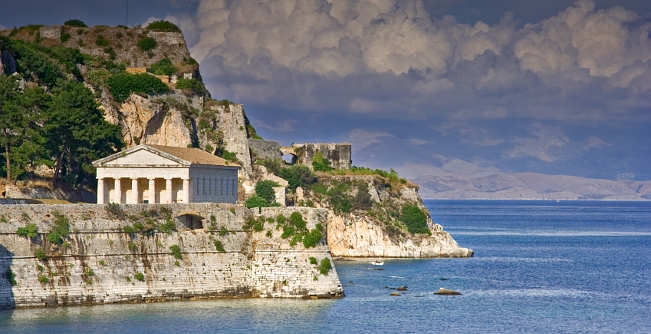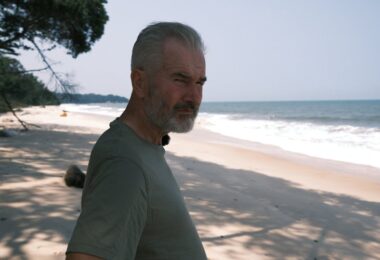An unspoilt Mediterranean paradise just off the coast of Albania, Corfu is an excellent destination for families this summer.
A historic setting, much of its fame stems from its importance in Greek mythology, most famously serving as a shelter for Homer’s Odysseus, it is now renowned as one of the most popular tourist destinations in Europe.
Up until the early 20th century, the island was largely visited by the European monarchy, serving as retreat for the elite and wealthy. Today however, it receives a far more varied group of visitors and is now one of the top destinations for British families. Picturesque and peaceful, there’s plenty to do and see on this Greek island with exquisite beaches, glass-bottomed boat tours from the old port of Corfu Town, numerous museums and water parks to keep all members of the family happy.
Adventure
A beautifully formed island, Corfu’s many beaches offer plenty of distinct experiences to enjoy. Its eastern beaches provide a more relaxed option with gentle waves and a rich underwater world ideal for scuba diving – making it an environment more suitable for those with younger families.
The western beaches are perfect for the more adventurous types such as the Paleokastritsa beach, which boasts several sea-caves that are a must for exploring. The beaches in the West are much deeper, with spectacular cliffs overlooking them and are considered the most beautiful part of the country, with the sight of yachts and expensive villas to back that up.
Mainland Corfu has many mountains, including Mount Pantokrator, the highest peak on the island. A bit of a climb, once at the top you’ll be thoroughly rewarded with some magnificent views of the coastline, perfect for those with older children. If you wish to see the more authentic side of the island, then visit one of its 100 villages and estates in areas such as Corfu Paxoi Othonoi, Erikousa and Mathraki. Each with its own unique character, you’ll be able to see the history of island with traces of Roman and Byzantine architecture and the stories that have shaped the island.
Taking the kids is also a feasible option with many of the villages putting on traditional puppet shows (Karagiozis) which will allow them to embrace the local culture. With olive cultivation being one of the foundations of the economy, one of the island’s many olive groves is a potential day out, accentuated by their rich and varied fauna and flora, making it a great place for all nature lovers.
History
Corfu is also rife with monuments and places of interest, from fortresses, temples, museums, and archaeological sites. Overlooking the island from the western side is the New Fortress, which played a vital role in the defeat of the final Ottoman attacks in 1716. It has its own Ceramics Museum and even a bar right at the top, which can be enjoyed late into the evening. There are also loads of churches to visit which are generally rather modest in size yet remain important cultural and religious sites such as the monastery of Panagia Palaiokastritsa and the Agios Spyridon.
The island’s history is carefully preserved through its museums, with rare and original artefacts on display and many being found in downtown Corfu. These include the Archaeological Museum (whose main exhibition is the 6th century BC Gorgo Gable) and the Museum of Far Eastern Art, the only one of its kind in Greece, which is housed in the Palace of Saints Michael and George which is the most important monument in the period of British rule. There are also more specific museums scattered around the island, presenting the history and culture of each area, including the Historic Folklore Museum of Messi.
If you’re also looking for a focused day-out with the kids, there are also the two main water parks, Aqualand in Central Corfu and Star Beach Water Park, the latter boasting jet-skiing, scuba-diving, water-skiing, banana-boat rides and a number of pools and rivers for those looking for a moment of respite. Boat rentals are also a possibility, from sailing or motor yachts, to speedboats that can be hired from local agencies.
Useful Information
– The tourist season is from the beginning of May to the end of October. Visiting out of season will require a flight to Athens then a domestic flight to Corfu due to availability of flights.
– Due to its Mediterranean location, mosquitoes are prominent on the island but are more of a nuisance than a cause for concern.
– There a number of public holidays throughout the year in which all shops are closed, so it’s advisable to ensure in advance which days may affect your holiday.
Highlights
– Mount Pantokrator: Hike up the mountain and be rewarded with some stunning views of the island.
– Corfu Town: Declared a UNESCO Monuments of World Cultural Heritage in 2007 with lots of museums and historic monuments.
– The Rocks of Paleokastritsa: A beautiful beach with several underwater sea-caves, perfect for scuba diving.
Best Places to Stay
– Delfino Blu Boutique Hotel: Built on the foot of a hill, it overlooks one of the most beautiful beaches on the island, and is composed of 12 studios, apartments and 3 suites (one which is a Honeymoon suite), 2 pools (one is a children’s pool), a restaurant, a pool bar and a beach bar. Visit www.delfinoblu.gr/ for more information.
– Kallisto Resorts: Located on the west coast just below the village of Pelekas, the access point for some of the best beaches, it is also only 12km from Corfu Town. With a golfcourse, a diving school and the island’s largest water park nearby, there’s plenty to do for the whole family. Visit www.corfuresorts.gr/ for more information.
Need to know more?
Tourist information: www.corfuvisit.net/
Tourist information: https://www.takethefamily.com/destinations/europe/greece/corfu – tabs-overview
Travel Guide: www.agni.gr/guides/useful_info/useful_info.asp








